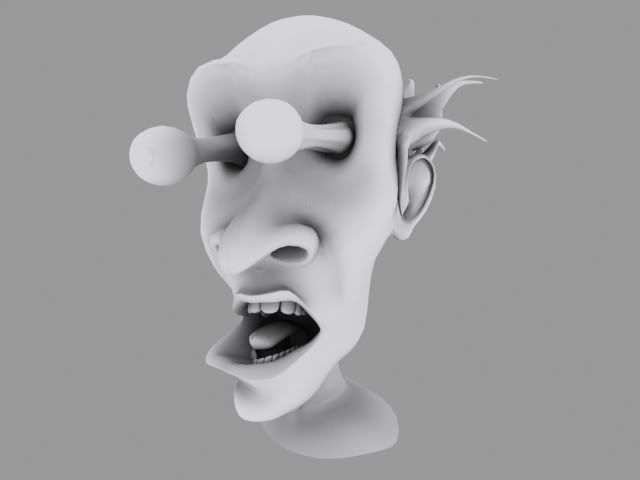So the project is three part; Poly Modelling, Rigging and Textures and Lighting. The project is about introducing us to advanced techniques within the three areas. First off the poly modelling. Here we had to do a class exercise of modelling a bug. A bug is usually pretty simple since most bugs have the skeleton on the outside and so have quite hard surfaces. This makes it ideal for working from simple geometric shapes. But as I decided to take this challenge a little bit further, and make a bug with character (the video below is the wireframe turnaround, which is why there is those lines all over the model):-
Rigging is basically about putting in the skeleton, and telling the program how the skin (object/model) is gonna behave. This stage is crucial for the animation since a crappy rig can really slow down and limit your animation. So to show the rigging you do a deformation test, which is a video where you bend all the joint separately. Quite boring, but a necessary evil for the animation. Here the deformation tests of my bug and the hand:-
That's it. I really tried not to make it a too technical article, but that's probably the same trying not to get wet while you swim:-s
Right so the future for me entails the major project, which in my case is gonna be a short film. The making of this is gonna span for the rest of the school year. So it might be a while before the next big update, but I will most likely give smaller updates of where I am in the process.
For now I will just wish everyone A MERRY CHRISTMAS and A SPLENDID NEW YEAR!!!!


















































